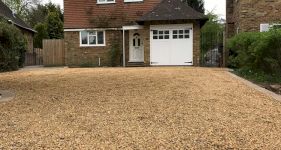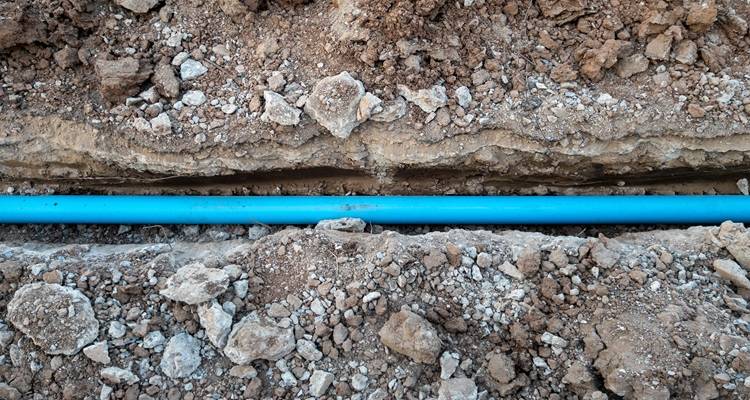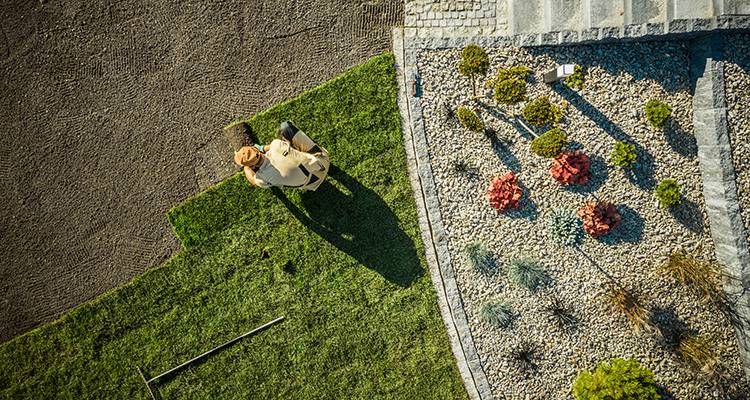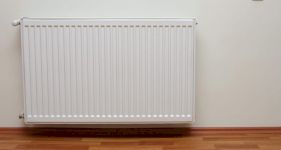Insulation and Loft Boarding Cost
- The cost to board a loft typically runs between £500 to £1,500.
- The cost to insulate a loft typically runs between £700 to £1,200.
- Boarding and insulating a loft together usually takes between 2 to 3 days.
- A breakdown of loft boarding and loft insulation costs in 2025, plus the main factors that affect prices.
- How long each type of job takes, what’s involved, and advice from tradespeople on MyJobQuote.
- How to find and hire a local loft boarding or insulation specialist.
How much does it cost to board or insulate a loft?
For many, the loft in your home is a space with untapped potential.
Whether it's getting a conversion or simply making it more usable for storage, boarding and insulating your loft can make a big difference.
Another great way to make effective use of the space and improve your home's energy efficency can be changes such as boarding and insulation. But the costs can vary widely depending on whether you are simply adding boards for storage, upgrading the insulation, or tackling both together.
In 2025, the average cost to board and insulate a loft is around £1,500.
- Loft boarding costs between £500 and £1,500. The exact price depends on the size of the loft and the type of boards you choose.
- Loft insulation costs between £700 and £1,200. The material you select and the size of the space will affect the final price.
On average, boarding and insulating a loft together takes 2 to 3 days. Smaller, simple jobs can be quicker, while complex installations may take longer.
Below, we look at loft boarding and loft insulation in detail — covering average prices, cost factors, timescales, what’s involved, and expert advice to help you plan your project.

£1,500
Table of Contents
- How Much Does Loft Boarding Cost?
- How Much Does Loft Insulation Cost?
- Additional Costs for Loft Boarding and Insulation
- Does Loft Boarding or Insulation Add Value?
- Can I Board or Insulate a Loft Myself?
- Building Regulations for Loft Boarding and Insulation
- Can I Get a Grant for Loft Insulation?
- Removing Loft Boarding and Insulation
- How to Choose a Loft Boarding and Insulation Contractor
- FAQs
- Sources
How Much Does Loft Boarding Cost?
The cost of loft boarding depends on the size of the space, the type of boards you choose, and how straightforward the job is. A small section of boarding can cost as little as £500, while a fully boarded large loft with extra work may exceed £1,500. Most standard projects fall somewhere in between.
What type of boards do I need to board over a loft for storage?
Loft Boarding Prices (Per m² and Per Job)
Below are the average costs to board different sized areas of a loft. These prices include materials and labour for a simple ladder installation:
| Area | Average Cost |
|---|---|
| 15m² | £1,100–£1,500 |
| 20m² | £1,500–£1,800 |
| 30m² | £2,350–£2,500 |
| 40m² | £3,000–£3,250 |
Note: Prices vary depending on board type (standard chipboard vs structural floorboard), access, and whether additional work such as moving a hatch or wiring is required.
How Long Does Loft Boarding Take?
Boarding a typical loft takes around 1 to 2 days. Large or complex jobs, such as those with raised boarding systems or added extras, may take up to 3 days. Most tradespeople charge around £150 to £250 per day for labour, with higher rates common in London and the South East.
Cost Factors Affecting Loft Boarding
- Size of the area — Larger lofts require more boards and time to install.
- Type of boards — Standard chipboard is cheapest; structural floorboards cost more.
- Raised vs direct boarding — Raised boarding (on loft legs) costs more but protects insulation and ventilation.
- Access — Narrow hatches or tricky loft layouts can add to labour costs.
- Labour charges — Day rates of £150–£250 are typical; difficult jobs or London work can increase this.
- Extras — Adding a loft ladder, lighting, or strengthening joists will increase the total price.
What’s Involved in Loft Boarding?
Loft boarding involves laying boards securely across joists to create a safe, usable surface. In most cases, tradespeople will:
- Assess access and joist condition before starting.
- Install raised loft legs if insulation needs to be preserved underneath.
- Lay tongue-and-groove boards or structural floorboards securely in place.
- Fit a loft ladder if required.
Once complete, the loft can be used for storage or, with further work, converted into a living space.
How Much Does Loft Insulation Cost?
The cost of loft insulation depends on the area to be insulated, the material you choose, and whether the insulation is laid on the loft floor (between/over joists) or installed at roof level (between/under rafters). Typical projects fall between £700 to £1,200 for a standard home, with smaller jobs costing less and complex roof-level installs costing more.
Loft Insulation Prices (Per m² and Per Job)
The table below shows average installed costs to insulate 15 m² of loft floor, using common materials. (Materials-only prices are lower; most installers quote supply and fit.)
| Type of insulation | Average cost (15 m²) |
|---|---|
| Blanket (rolls) | £400–£600 |
| Loose-fill | £275–£325 |
| Blown (injected) | £400–£500 |
How much insulation you’ll need depends on the type chosen and the size of your loft. Current UK building regulations recommend a minimum depth of 270mm for loft insulation. Typical methods include:
- Blanket rolls — Laid between joists, with a second layer across the top. Widely available and the easiest for DIY installation.
- Loose-fill — Poured between joists. Suits irregular spaces but can shift over time.
- Sheet insulation — Rigid boards cut to size and fitted between rafters at roof level.
- Blown fibre — Installed with specialist equipment. Always requires a professional installer.

Roof-Level Insulation Prices
If you cannot insulate the loft floor (for example, due to services or because you want a warm loft space), insulation can be fitted at the roof instead (between or under the rafters). Typical installed costs by home type are shown below.
| Type of home | Average cost |
|---|---|
| Detached | £640–£800 |
| Semi-detached | £550–£680 |
| Terraced | £450–£570 |
Roof insulation costs vary depending on rafter spacing, the insulation material chosen, and whether extra ventilation or vapour control layers are required. Professional installers will calculate the exact amount of material needed for your home.
How Long Does Loft Insulation Take?
Most insulation-only jobs take 1 to 4 hours for loose-fill or blown methods, and around 1 day for blanket (roll) insulation in a typical loft. If you are insulating and boarding together, allow 2 to 3 days for the combined job. Installers usually work on a £150 to £250 daily rate, though small insulation-only jobs are often priced per m² or as a flat job fee. For very small projects, a minimum charge may apply.
Cost Factors Affecting Loft Insulation
- ✔ Method — Floor insulation (between or over joists) is usually cheaper; roof-level insulation (between or under rafters) costs more but keeps the loft warm.
- ✔ Material — Blanket rolls are cost-effective; loose-fill suits awkward spaces; blown insulation speeds installation in hard-to-reach areas.
- ✔ Depth and coverage — Meeting recommended depths and insulating around obstructions (tanks, cabling) adds time and cost.
- ✔ Access — Tight hatches or limited headroom slow work and may require additional labour.
- ✔ Labour charges — Trades typically charge £150–£250 per day; rates are higher in London and the South East.
- ✔ Extras — Adding raised loft legs, vapour control layers, or eaves vents will increase the overall price.
What’s Involved in Loft Insulation?
- Pre-checks and preparation (access, ventilation, electrics, tank/pipework).
- Installing insulation on the loft floor (between/over joists) to the specified depth, or fitting at roof level if a warm loft is required.
- Maintaining ventilation paths around the eaves and services; adding raised loft legs if boarding will go over the insulation.
- Final tidy and safety checks; advice on keeping insulation clear of downlights and maintaining airflow.
Additional Costs for Loft Boarding and Insulation
These optional extras and situational add-ons can increase the total price. Use the ranges below as a guide — your quote will reflect access, layout, and any remedial work needed.
| Item | Typical Cost | Notes |
|---|---|---|
| Loft ladder (supply & fit) | £150–£350 | Basic timber or aluminium ladder; premium/folding ladders cost more. |
| Hatch enlargement or relocation | £120–£300 | Includes trimming, finishing, and new architrave where needed. |
| Raised boarding system (loft legs) | £10–£18 per m² | Keeps ventilation and insulation depth; added on top of boarding price. |
| Lighting & switch | £60–£150 | Simple LED batten with basic wiring; complex runs cost more. |
| Electrical safety adjustments | £80–£250 | Rerouting cables, downlight guards, safe clearances from insulation. |
| Tank & pipe insulation | £60–£180 | Lagging and jackets to prevent freezing after insulating the loft. |
| Vapour control layer / eaves vents | £50–£150 | Helps manage condensation and maintain airflow at the eaves. |
| Waste removal / skip | £70–£200 | Old boards/insulation disposal; price varies by volume and location. |
| Pest or damp remediation | £120–£400 | Only if required before boarding/insulation can proceed. |
| Structural joist strengthening | £200–£600 | Occasional; for uneven, undersized, or damaged joists. |
| Small-job minimum / access surcharge | £40–£120 | Applied for very small areas or difficult access. |
Item prices are indicative for straightforward installs. Complex wiring, premium ladders, larger hatch carpentry, or extensive waste can move a quote toward the top of each range. If you plan to board over new insulation, allow for a raised system so the insulation depth and ventilation are not compressed.
Does Loft Boarding or Insulation Add Value?
Both loft boarding and insulation can add value to a home, though in different ways. Boarding creates safe, accessible storage space — something buyers often look for. While it may not add thousands to the sale price, it can make your property more attractive and easier to sell.
Insulation delivers long-term savings on energy bills and can improve your home’s EPC rating. A better energy performance rating not only reduces running costs but can also make a property more appealing to prospective buyers in today’s market.
Because these improvements are relatively low-cost compared with other home upgrades, they often represent good value for money. When professionally installed, boarding and insulation are practical upgrades that make daily life easier and add to the appeal of your home.
Can I Board or Insulate a Loft Myself?
It is possible to install loft insulation or boarding yourself, but it is not always straightforward. Lofts are often cramped, dusty, and poorly lit, which makes the work uncomfortable and sometimes hazardous.
There are safety risks too. Stepping in the wrong place can damage the ceiling below, and compressing insulation under boards can reduce its effectiveness. While fitting simple blanket insulation rolls is manageable for some homeowners, most other insulation types and all but the smallest boarding jobs are better left to professionals.
Hiring a qualified installer ensures the work is safe, compliant with building standards, and maintains proper ventilation — avoiding costly problems later on. For most households, professional installation is the most reliable and cost-effective option.
What is the ideal thickness for a loft insulation? Does it depend on your home?
DIY Preparation Only
There are some safe preparation tasks you can handle yourself before a tradesperson arrives. For example, you can clear stored items or debris from the loft to make access easier — saving your installer time and potentially reducing labour costs.
However, working inside a loft is dusty, hot in summer, and carries safety risks. Fitting insulation or boarding yourself may seem simple, but stepping off joists can damage ceilings, and compressing insulation can reduce its effectiveness. Specialist methods such as blown insulation always require professional equipment.
For most households, limiting DIY to light preparation and leaving the installation to a professional is the safest and most cost-effective option.
Building Regulations for Loft Boarding and Insulation
UK building regulations require loft insulation to be at least 270 mm thick. Installers must also leave clear ventilation gaps at the eaves and ensure electrical cables, downlights, and water tanks are left safe and accessible. If the loft is boarded, the boards should be raised above the insulation to prevent compression and maintain airflow.
Can I Get a Grant for Loft Insulation?
Some households can get help with the cost of insulation through the Energy Company Obligation (ECO) scheme. Eligibility depends on your personal circumstances, the type of property, and your energy supplier. The grant usually covers the installation of insulation only, not extra work such as clearing a loft or fitting boards.
The simplest way to check if you qualify is to contact your energy supplier directly. Some providers may also refer to the ECO scheme as Affordable Warmth.
Removing Loft Boarding and Insulation
Sometimes existing loft boards or insulation need to be taken out before new materials can be installed. This is most common when there has been roof damage, water ingress, or if older insulation has degraded or was fitted incorrectly.

In some cases, boards can be lifted and reused once new insulation has been fitted. However, where materials are damaged, they should be fully removed and replaced. Most installers will also dispose of old insulation as part of the job.
As a guide, allow an extra £300 on top of installation costs to cover removal and disposal of old insulation and boarding. The final figure will depend on the size of your loft and the amount of waste to clear.
How to Choose a Loft Boarding and Insulation Contractor
Before hiring a contractor, it’s worth doing a few quick checks. This will help you find a reliable tradesperson and avoid poor-quality work.
- Get multiple quotes — Compare at least two or three prices. Be cautious of quotes that seem unusually low, as this can indicate shortcuts or poor-quality work.
- Check experience — Ask about similar projects completed and request to see photos of previous loft jobs.
- Read reviews — Look for consistent positive feedback across different sites. A few negative reviews are normal, but repeated complaints are a warning sign.
- Confirm what’s included — Make sure the quote covers materials, labour, waste removal, and any extras such as ladders or lighting.
FAQs
How long does loft insulation take to pay for itself?
Do I need to supply loft boards myself?
What materials are used for loft boarding?
How much weight can loft boards hold?
Can loft insulation cause damp?
Do I need building regulations approval for loft boarding?
How long does loft insulation last?
Sources
https://www.planningportal.co.uk/permission/common-projects/insulation/building-regulations-loft-insulation
https://www.labc.co.uk/news/what-are-building-regulation-requirements-installing-loft-insulation
https://buildingforhumanity.org.uk/advice/the-pros-and-cons-of-different-types-of-loft-insulation/
https://www.homebase.co.uk/ideas-advice/insulation-and-security/insulation/how-to-insulate-your-loft/
https://theplywood.com/how-to-put-plywood-flooring-in-an-attic/










